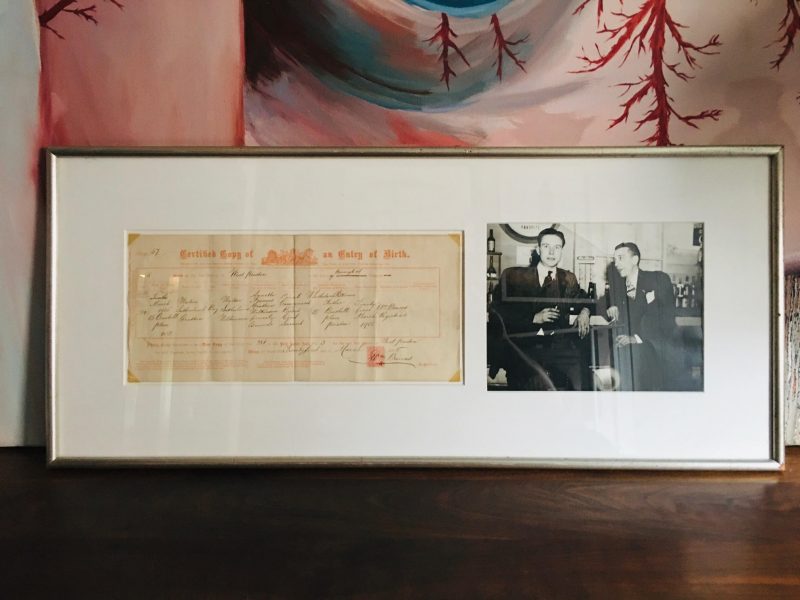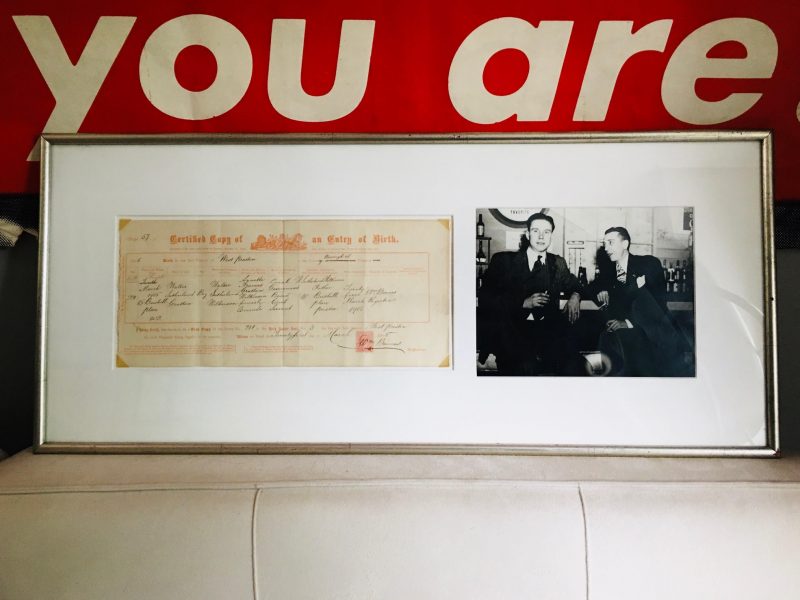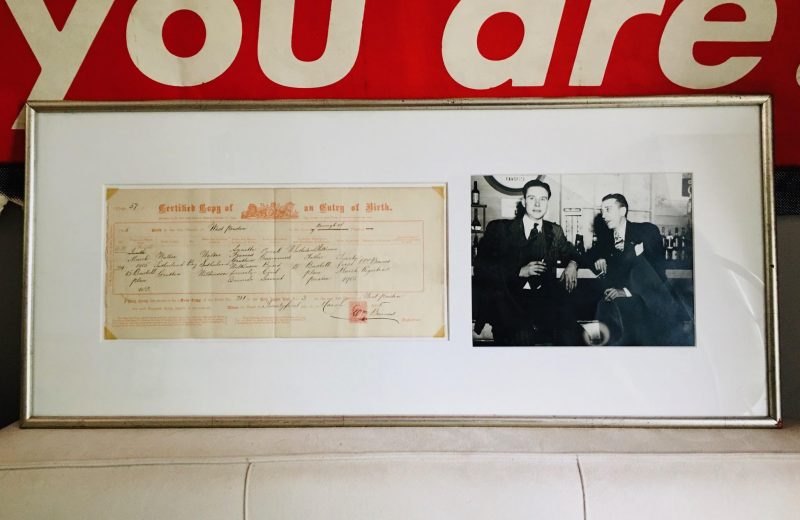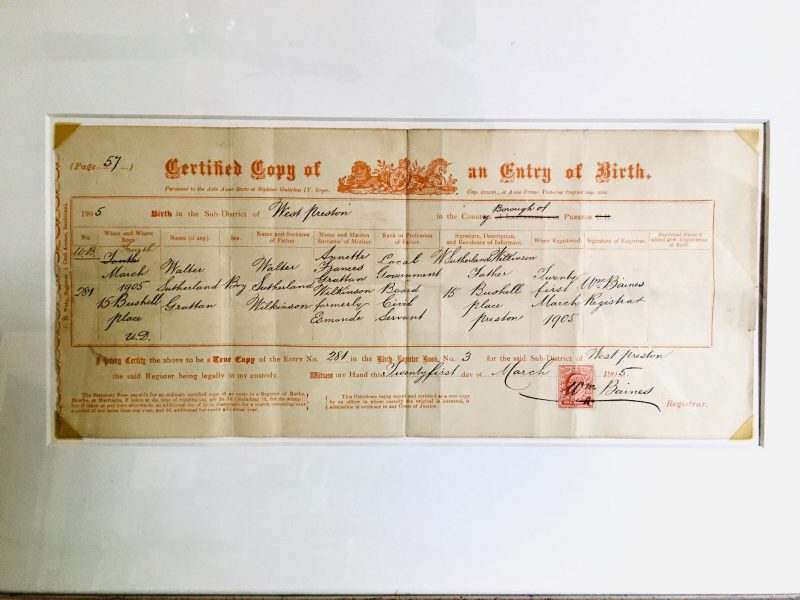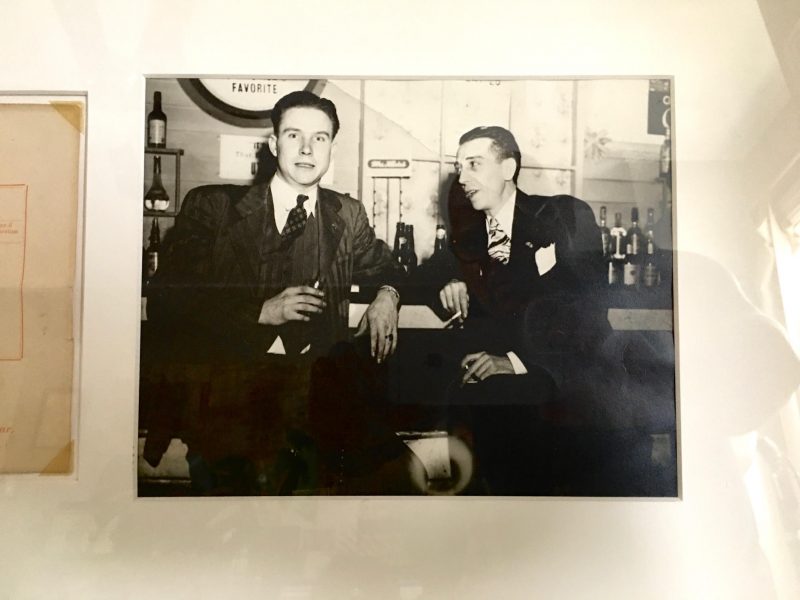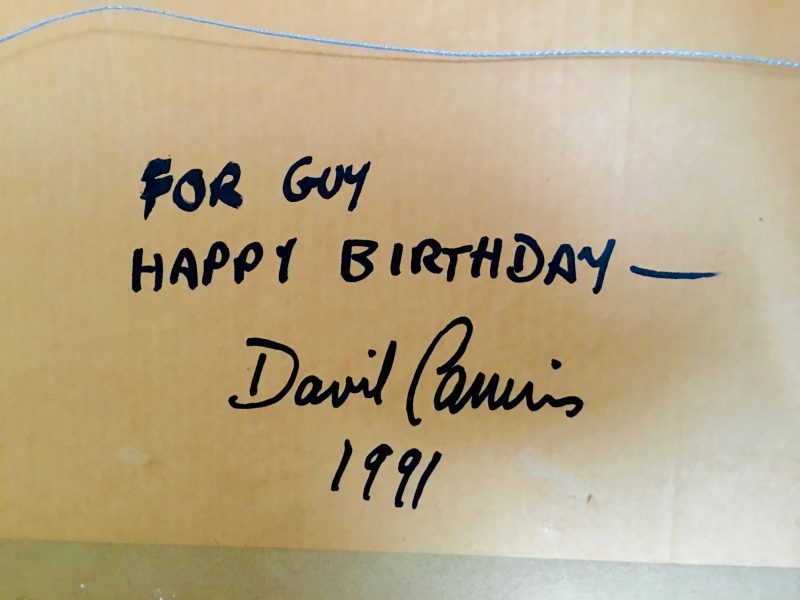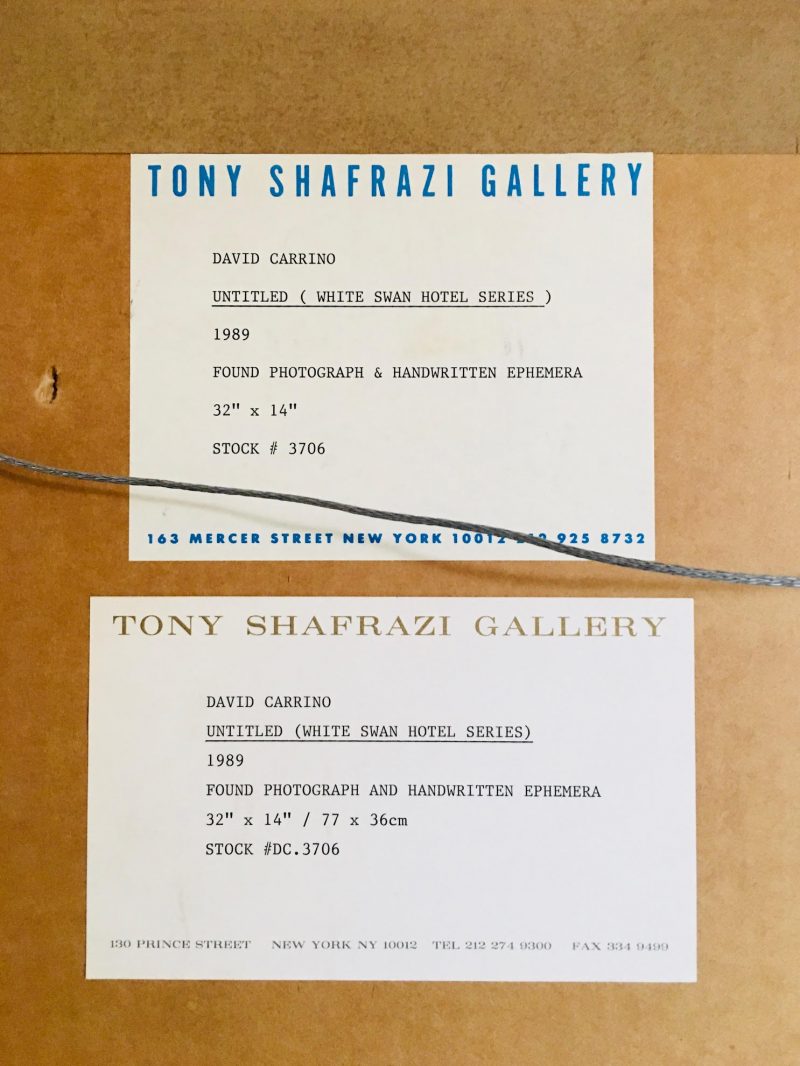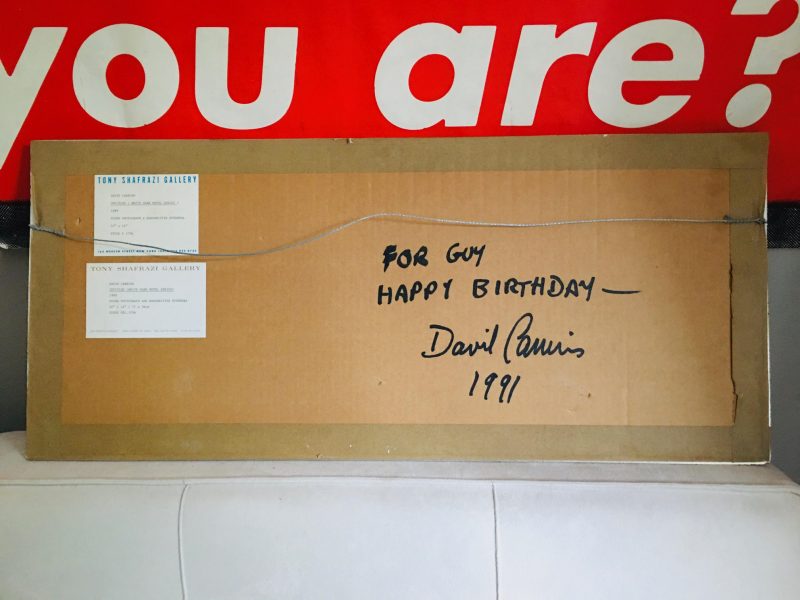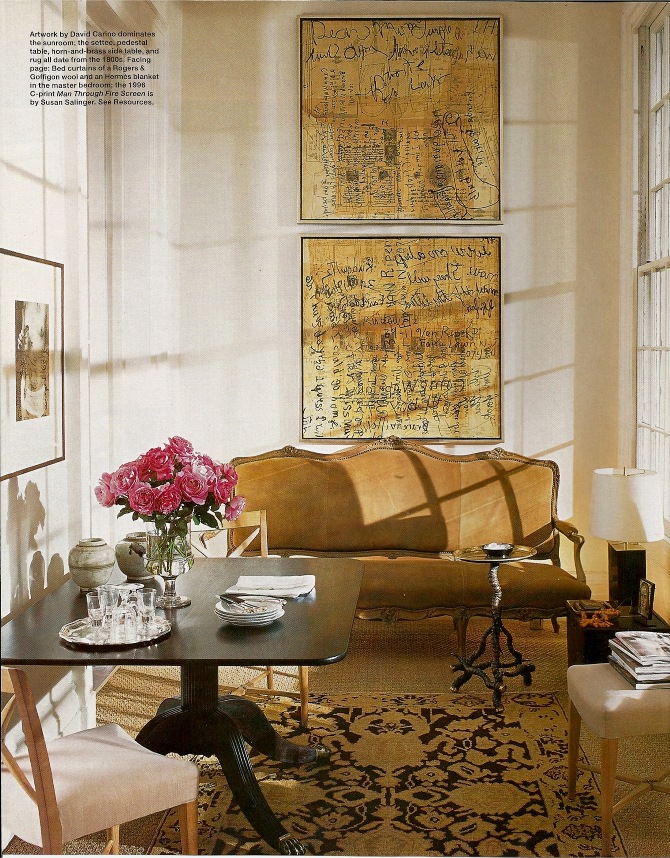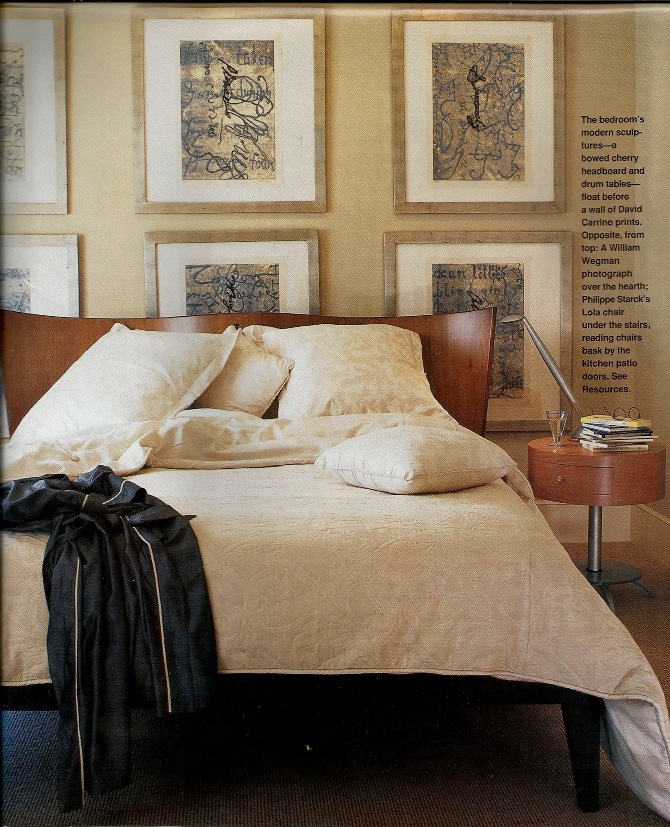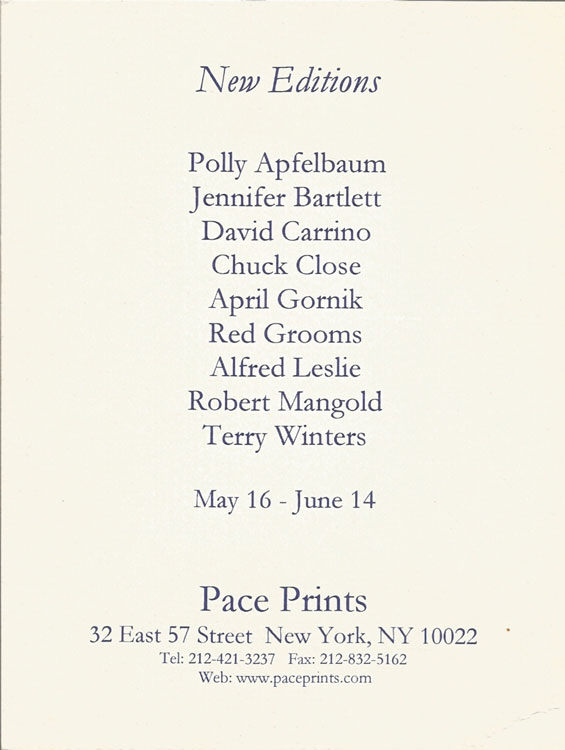David Carrino Original Photo Montage NYC 1989
David Carrino (New York, USA), American, born 1959. ‘Untitled (White Swan Hotel Series) 1989, Found Photograph & Handwritten Ephemera, Measures 32 x 14 inches Framed. Gift from the artist. Provenance; Tony Shafrazi Gallery, New York, USA.
DAVID CARRINO is a painter, photographer, and writer. His work has been exhibited throughout the United States and internationally, including Tony Shafrazi Gallery, NY and Pace Editions, NY. His writing has been published extensively in art magazines and literary journals, including Art News, Provincetown Arts and R. Crumb’s Weirdo. He lived full-time in Provincetown from 1997-2003 and currently lives and works in New York City.
https://cargocollective.com/davidcarrino/DRAWING-COLLAGE
Artist biography
Born in 1959, David Carrino was largely influenced by the 1970s growing up. The art sphere of the 1970s was epitomized by a wish to grow and strengthen itself, as a reaction to the many tensions of the previous decade. One of the most central movement of the 1970s was Conceptualism, which emerged as an offshoot of Minimalism, while the experimental, creative journey of Process art emerged by combining essential elements of Conceptualism with further reflections on art itself. The earliest ideas of environmentalism sprung from Land Art, which took art into earth itself, carving the land and bringing art to the outdoors.
For the first time since the decline of Abstract Expressionism, Expressive figure painting slowly re-emerged and regained its prominence, especially in Germany through the works of critically acclaimed figures Gerhard Richter, Anselm Kiefer and Georg Baselitz. The city of New York persisted as the most prominent artistic hub of the decade, with international artists drifting through the downtown scene, frequenting bars and art galleries, consolidating the idea of New York City as a cosmopolitan and refined cultural capital. A few significant global movements that sharpened the decade include photorealism, which was firstly introduced in the 1960s and reached commercial and critical success in the 1970s, as well as feminism which had a strong impact on the visual culture.
More: Artist David Carrino was drawn to Japanese calligraphy and Islamic hand lettering, which led him to think about what handwriting signifies. A master calligrapher imbues a word with meaning by the way he visually renders it, in the same way that in the Chinese language a single word has many different meanings depending on its spoken intonation. His investigation toward a western equivalent of this individual style led him to make these beautiful abstractions of signatures, hand written letters and manuscripts.
Research:
https://www.shutterbug.com/content/light-mysterybrcreative-images-david-carrino
https://myemail.constantcontact.com/August-22-Gallery-Stroll.html?soid=1101680942990&aid=2WMAZyPO0X0
New York Times 1989 Review:
David Carrino might be said to operate in the gap between the two New Museum shows reviewed above. His visual sources are mostly 19th-century and English; his treatment of them is Minimalist, even abstract.
For his paintings, Mr. Carrino copies original autograph letters and manuscripts by famous writers. Letters, lecture notes and manuscripts by Mary Shelley, Oscar Wilde, Joseph Conrad and Ralph Waldo Emerson are among those purloined for the paintings in this show. The artist then rewrites these copies at a larger scale, onto pieces of paper that he collages in layers and in different directions (upside down, right side up, sideways) onto canvas.
The results of this bizarre method are a series of pale gray surfaces covered with wafting strokes and largely illegible words that are suggestive of magnified water-stained manuscripts. Mixing signs of the writer’s touch with the artist’s own, these works question originality while honoring the individual hand. They confirm also the particularity and spirit conveyed by penned script, even in fragmented form, in the days before typewriters and computers. On the debit side, the paintings are visually monotonous, overly refined and infused with a palpable necrophilia – all weaknesses in which Mr. Carrino will find a lot of company in today’s art world.
